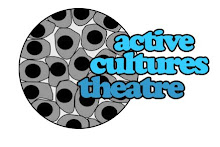Party pieces, recitations and other public performances

When I first arrived in Armenia, I was informed by my fellow professors that Armenians were an oral culture, that students were much more accustomed to public speaking than they were to essay writing. Always one to jump the gun, I immediately assigned my students all sorts of ex tempore speaking assignments. Where normally I might give a quiz, I instead assigned a presentation. My students, startled, valiantly attempted to meet my expectations and did quite well. But it was clear that they were not accustomed to presenting fledgling ideas in public. I couldn't figure out what I had done wrong.
It wasn't until the Christmas season that I realized my error. From a very early age, Armenian children are expected to recite and sing in public. Every child over the age of four has several pieces memorized that he or she can recite flawlessly whenever the situation demands a party piece. At birthday parties, school events
 , family gatherings, children are expected to give recitations and sing songs.
, family gatherings, children are expected to give recitations and sing songs.I first witnessed this at a puppet theatre where, before the performance began, children leapt up on stage and recited poems and, adorably off tune, sang songs. I misunderstood and thought this was some sort of special occasion. It was not. Since then, I have been treated to innumerable sweet, lisping performances at every sort of public gathering.
Armenians are oral, yes, ex tempora, no. Doubtlessly, if I had given my students a chance to prepare and mermorize, they would have soared. And they would have completely enjoyed themselves. But because, as an American, I have difficulty memorizing my phone number but could talk in public about nothing for quite a while, it never occured to me.




